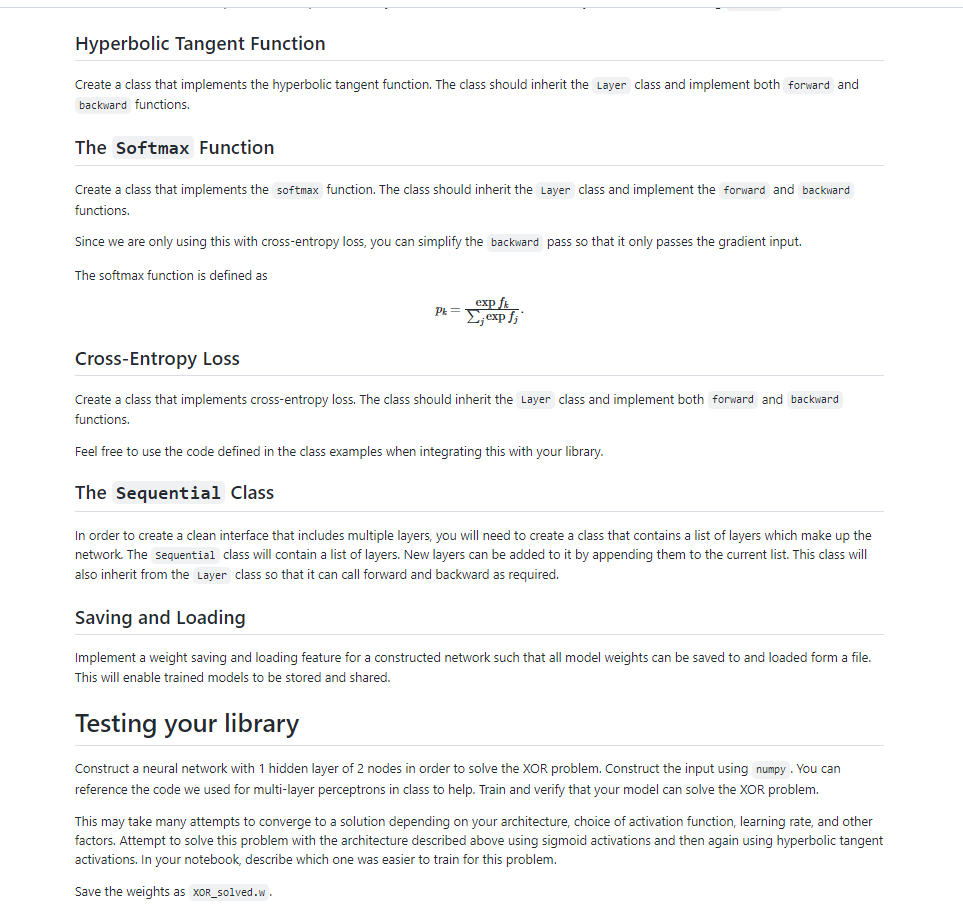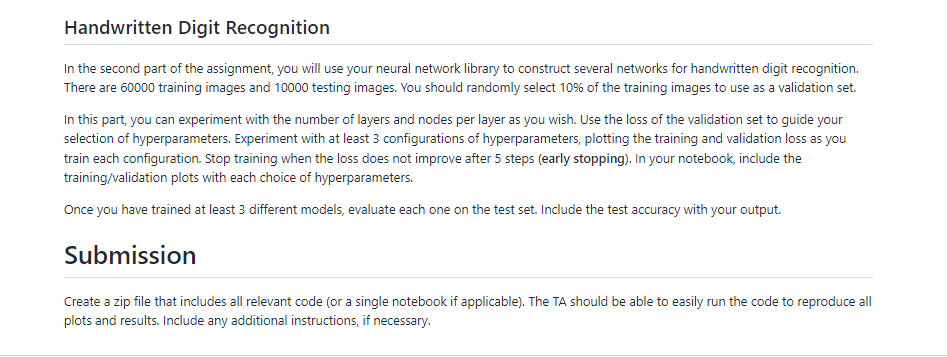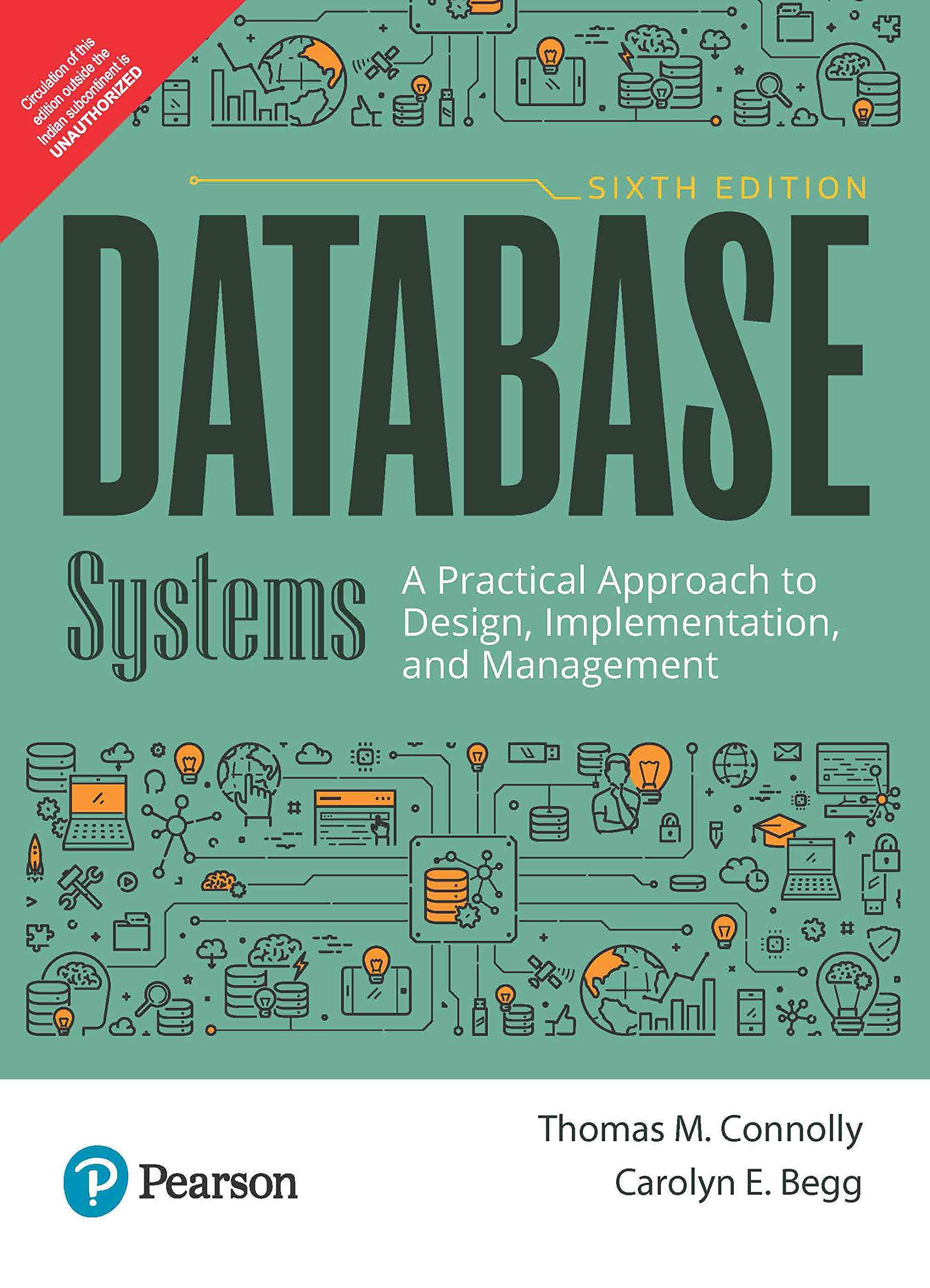


In the first part of this assignment, you will create a neural network library. The library will be made up of documented classes and functions that allow users to easily construct a neural network with an arbitrary number of layers and nodes. Through implementing this library, you will understand more clearly the atomic components that make up a basic neural network. The Class For the layers you will create in this assignment, it is worth it to create a parent class named which defined the forward and backward functions that are used by all layers. In this way, we can take advantage of polymorphism to easily compute the forward and backward passes of the entire network. Layer Create a class that implements a linear layer. The class should inherit the class and implement both a and anction. For a given input, the forward pass is computed as f(x;w)=xwT+b Here, xRnd,wRhd, and bRh, where n is the number of samples, d is the number of input features, and h is the number of output features. The backward pass should compute the gradient with respect to the weights and bias: dwdf(x;w)=xdwdf(x;w)=1 This is then multiplied with the gradients computed by the layer ahead of this one. Since there may be multiple layers, it should additionally compute dxdf to complete a chain of backward passes. Sigmoid Function Create a class that implements the logistic sigmoid function. The class should inherit the class and implement both backward functions. It is useful to store the output of forward pass of this layer as a class member so that it may be reused when calling backward. Hyperbolic Tangent Function Create a class that implements the hyperbolic tangent function. The class should inherit the class and implement both functions. Create a class that implements the hyperbolic tangent function. The class should inherit the class and implement both and functions. The Function Create a class that implements the function. The class should inherit the class and implement the and functions. Since we are only using this with cross-entropy loss, you can simplify the pass so that it only passes the gradient input. The softmax function is defined as pk=jexpfjexpfk Cross-Entropy Loss Create a class that implements cross-entropy loss. The class should inherit the class and implement both and functions. Feel free to use the code defined in the class examples when integrating this with your library. The In order to create a clean interface that includes multiple layers, you will need to create a class that contains a list of layers which make up the network. The class will contain a list of layers. New layers can be added to it by appending them to the current list. This class will also inherit from the class so that it can call forward and backward as required. Saving and Loading Implement a weight saving and loading feature for a constructed network such that all model weights can be saved to and loaded form a file. This will enable trained models to be stored and shared. Testing your library Construct a neural network with 1 hidden layer of 2 nodes in order to solve the XOR problem. Construct the input using numpy . You can reference the code we used for multi-layer perceptrons in class to help. Train and verify that your model can solve the XOR problem. This may take many attempts to converge to a solution depending on your architecture, choice of activation function, learning rate, and other factors. Attempt to solve this problem with the architecture described above using sigmoid activations and then again using hyperbolic tangent activations. In your notebook, describe which one was easier to train for this problem. Save the weights as Handwritten Digit Recognition In the second part of the assignment, you will use your neural network library to construct several networks for handwritten digit recognition. There are 60000 training images and 10000 testing images. You should randomly select 10% of the training images to use as a validation set. In this part, you can experiment with the number of layers and nodes per layer as you wish. Use the loss of the validation set to guide your selection of hyperparameters. Experiment with at least 3 configurations of hyperparameters, plotting the training and validation loss as you train each configuration. Stop training when the loss does not improve after 5 steps (early stopping). In your notebook, include the training/validation plots with each choice of hyperparameters. Once you have trained at least 3 different models, evaluate each one on the test set. Include the test accuracy with your output. Submission Create a zip file that includes all relevant code (or a single notebook if applicable). The TA should be able to easily run the code to reproduce all plots and results. Include any additional instructions, if necessary









